Carpet FAQ: 18 Things You Should Know
You know you want some new carpet for your home, and you’ve done lots of research to find the best option, but you still have some unresolved questions. If this sounds like you, then you’re in the right place. This FAQ has answers to the most common questions about carpet.
Whether you’re searching for carpet installation tips or advice on how to clean carpet, we’ve got you covered. This guide can get you the answers you need to make an informed decision. Get ready to learn about the different types of carpet and fibers, pricing, and much more.
Whether you’re searching for carpet installation tips or advice on how to clean carpet, we’ve got you covered. This guide can get you the answers you need to make an informed decision. Get ready to learn about the different types of carpet and fibers, pricing, and much more.
The Basics
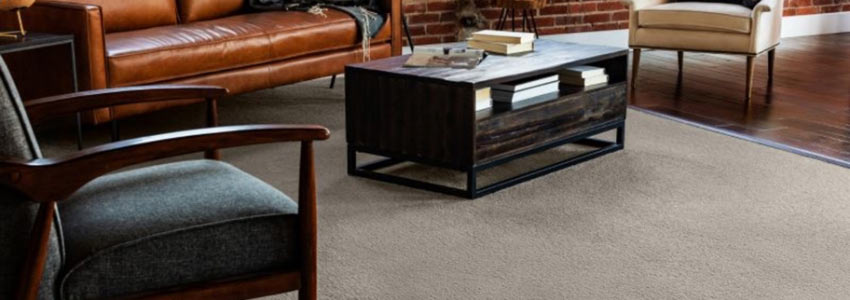
It’s time to learn the most important basics about carpeting, from the different types available to the materials they are made out of.
What is broadloom carpet?
Broadloom is the traditional wall to wall carpet roll that’s very common in homes. It’s durable, comfortable, and classic.Rolls offer an easy way to introduce textures, colors, and stylish patterns into any space. Some broadloom carpets come with extra features to make life easier for you, including added padding, stain-resistance, and even waterproof materials.
It’s important to note that rolls can be tricky to install. Because this flooring isn’t always DIY-friendly, professional installation is sometimes recommended, and that can add to your budget.
What are carpet tiles?
As you might guess from the name, carpet tiles come in tile form instead of rolls. They’re stylish, DIY-friendly, and versatile.Carpet tile sometimes has padding attached, so you don’t need to invest in any extra products to install if you choose a padded tile product. Just peel and stick, glue, tape, or lock your tiles down, depending on the product type and the installation location, and you’re finished. In fact, you can completely carpet a room in only a few hours.
Because carpet squares come in a variety of colors and patterns, you have the opportunity to mix and match and create a completely unique floor for your space. Another advantage is that you can choose the amount of coverage. With tiles, you can have wall to wall carpeting, or install just enough to create an area rug or carpet runner. The choice is yours, and who doesn’t love having choices?
In terms of price, tiles tend to be less expensive per square foot compared to broadloom rolls. That makes it the perfect option if you’re looking for a quick and cheap room makeover.
What is carpet made out of?
Carpets are usually made from one of two popular materials: nylon and polyester. There are several other types as well, but these are the most common options that you’re likely to come across.Here are your options:
Nylon Fibers:
Nylon remains the most popular carpet fiber. It is durable, static-free, and well-suited for indoor use. However, it does fade in direct sunlight, so it shouldn’t be used outdoors. Often it’s treated with a stain-resistant technology to keep it looking beautiful through all of life’s messes.Nylon carpets also have a Class 1 fire rating, which means they melt instead of burning. This makes them extra safe. As well as great for installation in commercial spaces
Polyester Fibers:
Polyester is mostly made from recycled materials, which is a plus if you want an eco-friendly carpet. This fiber material is rising in popularity and giving nylon a run for its money.It’s cheaper than nylon, and is just as durable. It’s extremely fade- and stain-resistant.
Polyester also usually has the widest range of color choices so your floor can be anything from bright pink to a neutral brown.

What carpet texture options are there?
Carpet comes in a variety of textures such as loop, cut, and frieze. These styles refer to how the fibers are arranged to create the feel, look, and texture of the flooring. These textures can also determine how durable a flooring is.- Loop Fibers: Looped fibers are great for high traffic and commercial areas because they’re more durable. They don’t flatten or wear down easily, making for a clean and simple appearance.
- Cut Fibers: These fibers are cut so the ends are exposed on the surface. They’re smooth to the touch, and great throughout the home, but not as durable as loop fibers.
- Cut and Loop Fibers: This look combines cut and loop fibers to create stylish, modern looks. The varying loop and cut heights add texture.
- Frieze Fibers: This is also known as twisted carpet. The cut fibers are twisted to have a modern, stylish flair and plush feel.
What is carpet face weight?
Face weight refers to a measurement of a carpet’s density. It is the weight (in ounces) of carpet per square yard. The higher the face weight, the more material has been used, and that means a more durable product.How can you tell the quality of carpet?
To tell the quality of carpet, you need to consider how it is made. Think about the material and face weight. Quality carpet will be made of premium materials, and have a higher face weight.A good carpet should also have a strong backing to support the floor. Many high-end options also offer features like stain-proof or waterproof treated fibers. Keep these factors in mind as you determine the quality.

What is carpet padding?
Carpet padding is usually a foam underlayment specifically designed for installation under broadloom rolls. Most padding consists of polyurethane foam – the same stuff that’s in furniture, mattresses, and even car seats. This foam offers support, allowing the floor to last longer.Padding serves a number of uses in your home:
- Comfort: Padding absorbs the impact of your footstep, making it comfortable to walk on. It also helps reduce walking fatigue with its shock-absorbing properties.
- Acoustics: Sound-absorbing materials are a must-have for apartments, condos, and two-level homes. Studies show that using padding significantly increases impact noise ratings and reduces noise.
- Insulation: Padding keeps your energy bill down and your home well insulated. It helps retain some of your home’s heat in the cold, and can also prevent cool air from escaping during the hotter months.
What carpet padding is best?
The right padding depends on the type of carpet you have. Here are padding recommendations for different carpet types. Discover which option is best for you:Residential Carpet Padding:
Residential carpets are all about comfort and softness. A thicker carpet pad can enhance your floor and make it feel even cozier. Choose a bonded or frothed foam padding that is 7/16” – ½” thick.Commercial Carpet Padding:
Commercial carpet installations usually focus on long-term durability. Rubber underlayment is often the best option in this application, because it’s incredibly durable while still adding some softness and impact absorption to the floor.How to Install Carpet
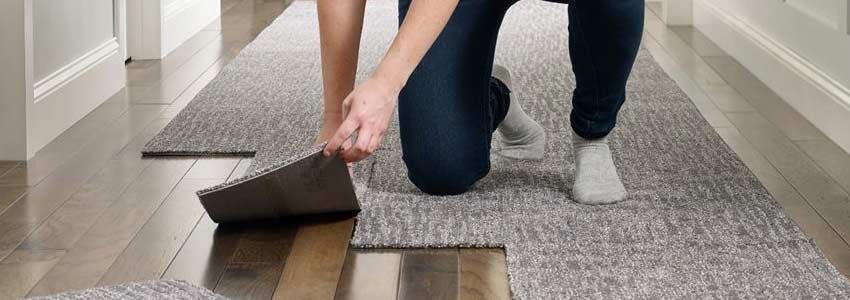
Now you know the basics, and you might have a good idea about the kind of flooring you want. Before you finalize your decision, it’s important to think about installation. The installation method can determine your overall cost, the durability of your floor, and your ability to replace the floor if it ever gets damaged.
Learn more about factors such as DIY-friendliness, application, and installation options for different types of carpet.
How do you install carpet tiles?
There are four main methods for installing carpet tiles. Each method is suited to different applications. Learn which installation method works best for you.Peel and Stick:
Peel and stick carpet tiles are the easiest to install. They come with a pre-applied adhesive covered in plastic backing. To install, just peel the backing, place the tile, and firmly press down to make sure it’s secure.Please note, some adhesives leave a residue on the subfloor, but many do not. To test this, place your hand on the adhesive; if your hand is sticky after, it will leave a residue. Most of the time the residue can easily be cleaned off the subfloor.
Glue-Free:
To install glue-free carpet tile, you’ll need to use double-sided carpet tape. When laying the tile, apply the tape around the perimeter of the entire floor. You can then use the double-sided tape to secure adjoining tiles to the subfloor or choose floating carpet tile tabs to float your tiles This requires a bit more effort than peel and stick tiles, but it’s still way easier than gluing the tiles down.Glue Down:
Sometimes, peel and stick or tape-down tiles just won’t cut it, and you need something with more stability. For a room with high traffic, you’ll need a pressure-sensitive adhesive, or glue, to keep the tile in place.For this installation, apply the glue as per the glue manufacturer installation instructions, then carefully lay the tiles. This is known as a permanent installation, so be sure that you love the floor before you go through with it.
Interlocking:
Interlocking carpet tiles can connect via one of two methods: interlocking tabs, or a peg and loop system.Tab interlocking carpet tiles kind of look like puzzle pieces, and you install them the same way. Just align and press the edges together and you’re done.
For peg and loop carpet tiles, two sides will have loops, and the other two sides will have pegs. To install, snap the loops into the pegs of the adjacent tile. Once the whole floor is finished, the interlocks will be hidden, and just the surface shows.
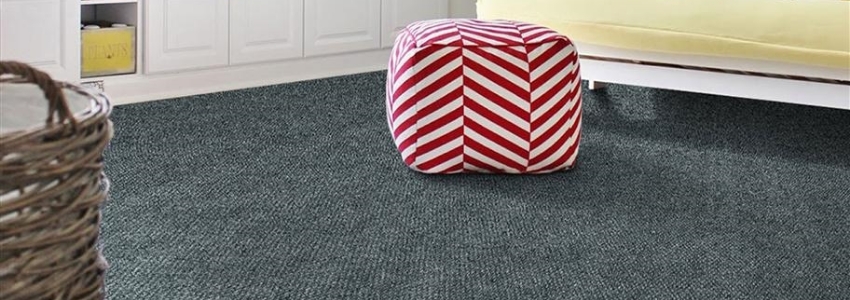
How do you install carpet rolls?
If you want to easily DIY install carpet rolls, there are two main ways to do that. Keep in mind, both of these options are only suitable for residential use. For heavy traffic and commercial areas, professional installation is recommended.Tape Down
To tape down a carpet roll, start by spreading it flat and making sure there aren’t any tension points. It doesn’t need to be stretched like it would if you were installing it the old-fashioned way.Cut any seams and edges to fit the flooring to the room. To do this, use a utility knife or a wall trimmer and cut with the backing facing up.
Once your roll is cut and laid out, fold up the edges to prepare for tape installation. Be sure to use correctly branded tape, or you could risk voiding the manufacturer’s warranty.
Tape the seams before the perimeter to make sure there aren’t any gaps. To finish up, press the carpet down with a weighted roller to ensure a secure bond.
Glue-Down
The steps for a glue-down installation are similar to using carpet tape. You should prep the roll in the same manner, then fold up the edges to apply the glue. Be sure to use the recommended glue so you don’t void the manufacturer’s warranty.Again, you’ll want to start the installation at the seams to prevent any gaps and then move on to the perimeter. Apply the glue using a flat adhesive applicator, making sure the glue consistently spans at least six inches wide. Allow the glue to cure according to the manufacturer’s instructions before laying any carpet. Once it’s laid and fully bonded, you’re done, easy as that!
What carpet is easiest to install?
Peel and stick carpet tiles are the easiest to install because they don’t require any stretching, taping, or gluing. To install peel and stick tiles, all you have to do is remove the backing to expose the adhesive and firmly press the tile to the subfloor. Carpet tiles are also incredibly easy to cut, so you can fit them into your space without wasting a lot of material.What carpet is easiest to replace?
Just like they’re easy to install, carpet tiles are also easy to replace. If a section of your floor gets too soiled or damaged, you don’t have to tear up the whole floor. Instead, you can just pull up the damaged tiles and install replacement tiles in a matter of minutes.You don’t have to deal with a lot of measuring or cutting. It’s as simple as putting a puzzle back together.
Cleaning and Maintenance
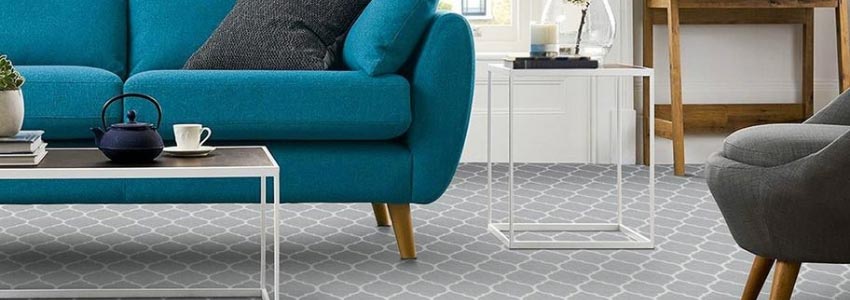
Alright, you’ve got the basics down, and you even know the basics of how to DIY install carpet. That’s great, but how are you going to take care of your floor once it’s installed? Carpeting is comfortable, but it’s also infamously easy to soil and stain. Gather some helpful cleaning and maintenance tips so you can keep your new flooring looking great.
How do you clean carpet?
The best way to keep carpet clean is to vacuum it regularly. This prevents a buildup of dust and dirt (source). For spills and spot-cleaning, here’s what you can do:- To spot clean carpet that has a spill or stain, start by blotting up any moisture with a clean cloth. Don’t rub at the area, as this will only spread the spill.
- Next, spray a cleaner over the affected area. Manufacturers recommend a cleaner that is certified by the Carpet and Rug Institute for best results. Let the cleaner soak in for 5-10 minutes.
- Gently blot the spill or stain with a fresh towel until it fades away.
- Rinse the area with clean water, and dab up any remaining moisture with a second clean towel to finish up.
What is the best carpet cleaner?
What is the best carpet cleaner?
Not all cleaning sprays perform the same. In fact, some of them can even attract more dirt and oil after you use them. Others may have components that bleach or discolor your floor. To avoid this problem, use a Carpet and Rug Institute certified cleaner.Best Homemade Carpet Cleaner
If you don’t have the budget for a store-bought cleaner, or you would just prefer to use your own ingredients, here’s a homemade solution that should work for spot-cleaning.- 1 cup of warm water
- 1/8 tsp dish soap (without bleach, oils or moisturizers)
- 1 tbsp white vinegar
- 1 tsp baking soda
Please note: For any homemade cleaner, it’s a good idea to first test it in an inconspicuous spot to see if it causes any unexpected discoloration or damage.
How do you remove stains in carpet?
To remove set-in stains in carpet, you’ll follow the same steps as if you were cleaning a spill.- Spray the cleaner over a small area and let it sit for 5-10 minutes.
- Dab the stain with a clean towel.
- Once the stain has vanished, rinse the area with clean water.
- Soak up the remaining moisture with a second clean towel to finish up.
How often should you replace carpet?
Typically, carpets are made to last 5-15 years (source). To see if your flooring needs to be replaced any time soon, look out for these warning signs:- Stains: Over time, stain-resistant treatments on the fibers will fade away, and the floor can become more prone to stains. Even if your floor is only a few years old, a lot of stains and soiling leads to an unsightly appearance you don’t want in your home.
- Matting or compression: After a while, older carpet will start compressing and matting down in high traffic areas. The padding underneath will start wearing down, too. This detracts from the appearance and also makes the floor less comfortable.
- Smell: An unpleasant smell could be caused by a number of things. It could come from a residue of old oils and stains over the years. It could also mean there’s mold or mildew present, which can cause respiratory or other health issues.
Cost Questions
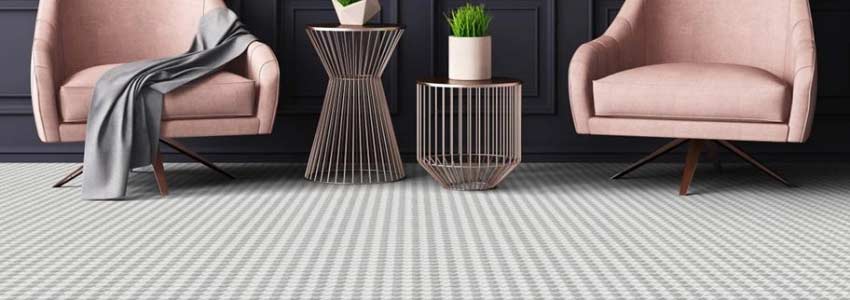
At this point, you might know exactly what kind of carpet you want, but none of that will matter if it doesn’t fit your budget. To make sure you can afford the floor you love, learn about the average costs of carpet and installation, so you can plan ahead for your project.
How much does carpet cost?
The cost of carpet can vary widely depending on a number of factors. According to HomeAdvisor, in 2020 carpet pricing averages from, “$2 to $7 per square foot with a broad range of $1 to $20 per square foot.”The type of fiber can dramatically change the price. More luxury options made from higher-quality materials will naturally cost more, but they also tend to last longer and perform better.
Not only that, but the style also determines cost. Generally, rolls are going to cost more than tiles per square foot.
Finally, you should take into consideration any extra features, such as stain-resistance or water-resistance. With those extra benefits, you can expect a slightly higher price.
How much does it cost to install carpet?
According to HomeAdvisor, in 2020 the national average of labor costs for installation is between, “$3.50 to $11 per square foot or $32 to $100 per square yard.” For a 10’ x 10’ square room, professional carpet installation will cost you somewhere on average between $350 to $1,100.Conclusion
Congratulations! Now you know everything you need to know about carpet. Hopefully, this helps you on your quest to find the perfect floor for your space. If you feel ready to shop, why not check out our selection, and order some free samples?



